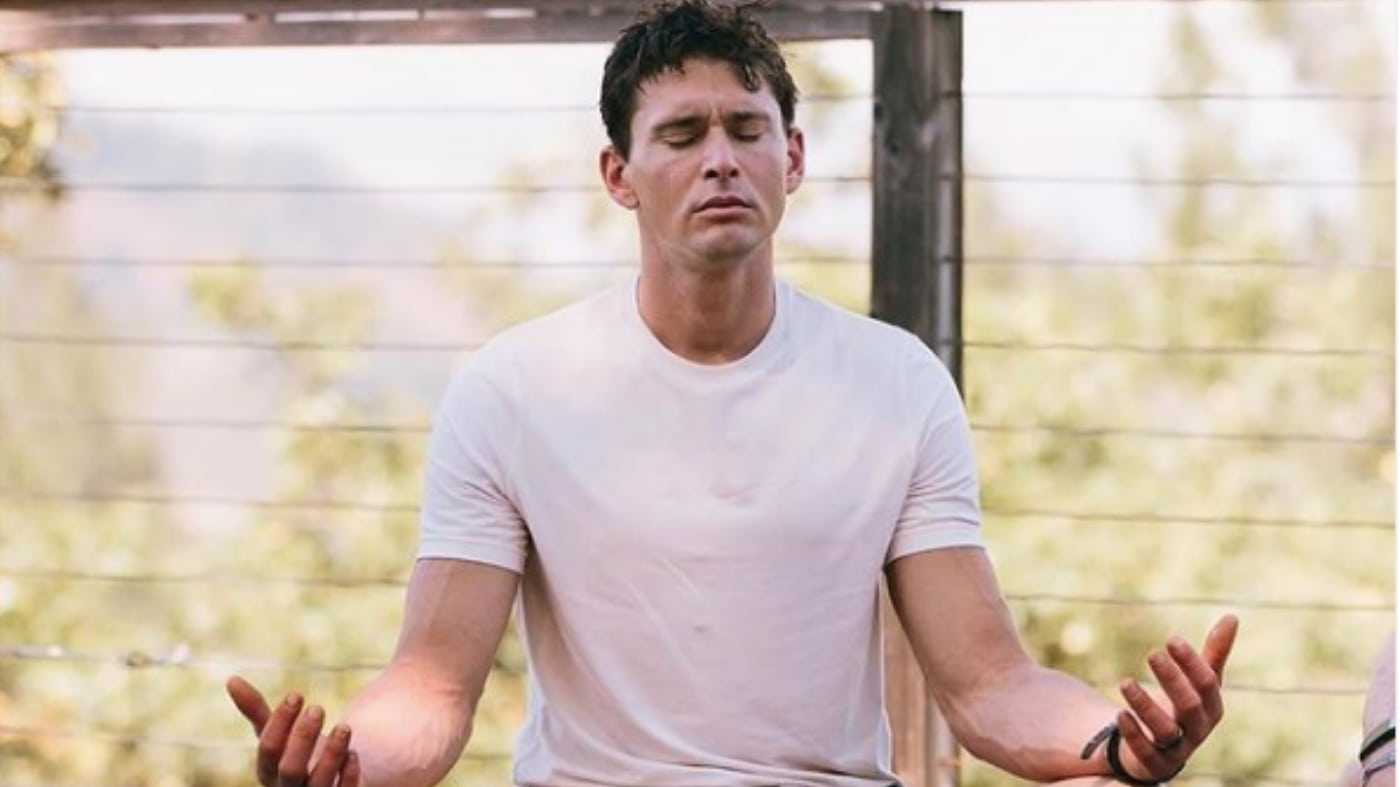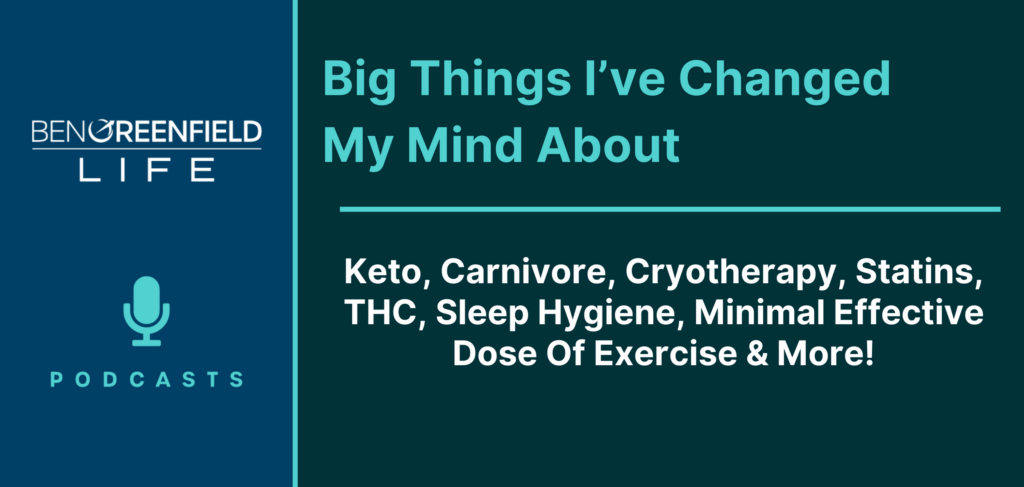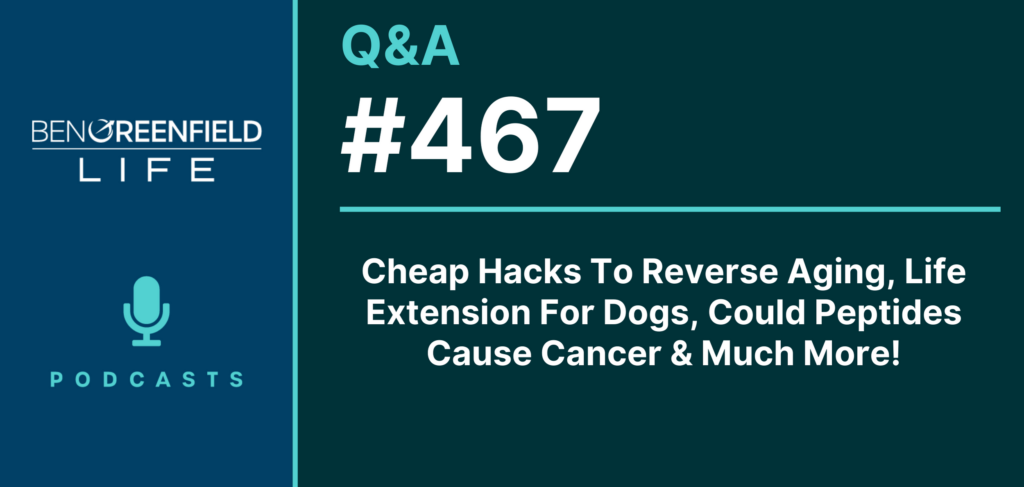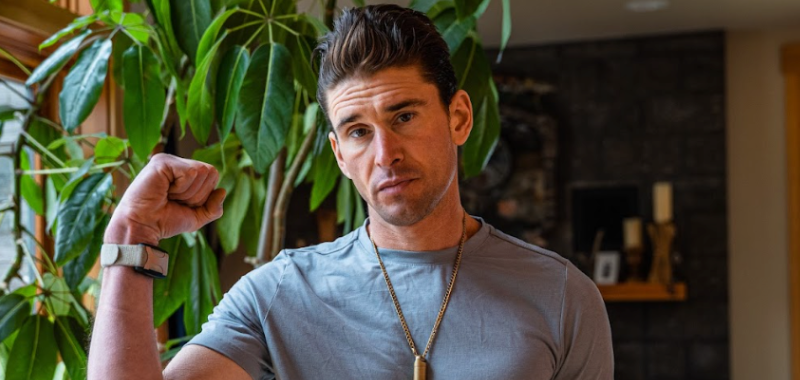May 18, 2021
What if I told you…
…that there is a failsafe and fast method to improve stress-related chronic illnesses, promote self-healing, lower anxiety, boost performance through increasing carbon dioxide retention and nitric oxide production, and much, much more?
Plus it’s completely free, there’s no equipment involved, you can literally do it anywhere, and the benefits only increase over time?
If it sounds like magic…well…it kind of is.
What I’m referring to is the practice of breathwork, which has quickly become a “New Age-y” woo-woo term, but is actually as old as religions like Taoism, Buddhism, Hinduism, and Christianity, where breathing was used as a way to alter or expand consciousness, connect to a higher power, and promote self-discovery or healing—which I suppose is indeed a bit magical. Today, breathwork has been granted a modern resurgence, thanks to folks like Dr. Stanislav Grof, Wim Hof, Anders Olsson, James Nestor, Patrick McKeown, and many others who have helped to popularize the practice and bring it to the masses.
While there are now at least 50 offshoots of breathwork being practiced around the world, it should be noted that not just any breathing technique will produce the same results.
And while I’ve tried dozens of types myself, including the Wim Hof Method, Buteyko, box breathing, rhythmic, Kundalini, Holotropic Breathwork, and more—there’s one technique that I have practiced for years and that I’ve found to be the most effective and transformation for my own physical, mental, and spiritual health.
That favorite form of breathwork—the one I am diving into right now and want to teach you about in this article—is called SOMA Breath. I interviewed the creator and founder of SOMA, Niraj Naik, a few years ago on my podcast, and again this past week, and he continues to blow me away with his new breathwork routines and his story of how he beat chronic illness and severe depression using breathwork, along with sound healing, supplements, and diet.
Since I first talked to Niraj (in a sauna in Estonia, no less), he’s become my “go-to breathwork guy,” so much so that I:
- Went through his 21-Day Awakening Journey;
- Completed the brand-new 11-Day SOMA BreathFit Course with my twin boys, in which I increased my breath-hold time by over 20 seconds;
- And now, at least 3 times a week, my boys and I practice SOMA Breath in the sauna, and I also use it regularly to enhance the spiritual benefits of prayer and meditation—sometimes for up to 60 minutes at a time.
While I’ve produced many podcasts and articles about breathwork, and devoted an entire chapter in my book Boundless to it, I still get a lot of questions about how the techniques differ and what method I practice. So, in this article, I’ll be diving deep into SOMA Breath, including its science-backed benefits, how it works, and how you can start utilizing this free tool available to you right now, with your very own lungs.
The Fascinating History of “Soma”
Before we jump into SOMA Breath, I find the historical context of the word “soma” to be incredibly interesting, and an understanding of its history makes the breathing practice by its name that much more meaningful.
“Soma” is a Vedic Sanskrit word that translates to “distill, extract, or sprinkle.” It’s referenced over 50,000 times in the Rig Veda, an ancient Hindu collection of Sanskrit hymns, dated all the way back to 1500 B.C., often in the context of psychedelic rituals.
In other words, “soma” is thought to describe an ancient ritual involving a natural psychedelic…
…such as a mushroom, cannabis, or other plant substance—which supposedly helped people reach states of spiritual enlightenment.
According to legend, over time this soma substance began to deplete as more and more humans inhabited the earth. So the Rishis, or ancient “enlightened sages,” began to tell people to “turn within” to recreate the psychedelic experiences without the soma ritual…often using the power of their breath.
Thus, the origins of Tantra were born—the original art of moving energy (breath) through the body to create feelings of spiritual bliss—and from it came the ancient breathing techniques of Pranayama (which is still alive and well, and gaining popularity thanks to the modern-day explosion of yoga).
In Sanskrit, Prana means energy and Yama means to control or restrain—so Pranayama uses breathing exercises to “control the flow of energy” in our bodies. More practically, it involves controlling the breath using retention (holding of the breath) and locks (for example, lowering the chin to the neck so that the throat closes). These techniques of Pranayama are what make up the core foundation of SOMA Breath.
So it's quite interesting that in our modern environment, we can tap into this same ancient wisdom with our mouth, nose, and lungs. It's time to learn how, don't you think?
Pranayama & Why Deep Breathing Is A Fallacy
In order to understand why Pranayama-style breathwork is so beneficial, it helps to explain why taking lots of very deep breaths, also known as “over-breathing,” is not as good for your health as we’ve been led to believe.
When you breathe in, you inhale oxygen, and when you breathe out, you exhale carbon dioxide (CO2). Many of us have been taught that oxygen is good, and CO2 is bad—so we should take lots of big, deep breaths to get as much oxygen into our lungs and body as possible.
The truth is, this is misleading and downright scientifically false. In fact, CO2 has many important functions in the body, and too much oxygen in the body can actually be detrimental to health, doing the exact opposite of what we may think.
CO2 relaxes the muscles that surround our airways, arteries, and capillaries, helping to increase blood flow to different parts of the body, like the brain, heart, and muscles. In other words, CO2 is what helps to get oxygen where it needs to go in the first place (a process described as the Bohr Effect).
According to the Buteyko Clinic, when we breathe in too deeply, we’re reducing the amounts of CO2 in our bloodstream, and actually decreasing the oxygenation of our brains and other organs, which can lead to greater risk of anxiety, panic attacks, insomnia, sleep apnea, and even more severe cardiac problems. (If you want to hear more about this, I interviewed the founder of the Buteyko Clinic in my podcast “Maximize Oxygen Utilization Efficiency, Simulate High Altitude Training, Get The Cardiovascular Capacity of a Navy SEAL & More With ‘The Oxygen Advantage’ Author Patrick McKeown.”)
Crazy, huh?
But the conception of CO2 as harmful to bodily systems is not the only fallacy—the role of another important compound, nitric oxide, has also been hugely misunderstood. Prior to the 1990s, nitric oxide was considered a highly toxic substance, which is accurate when nitric oxide exists outside of the human body. However, within the body, nitric oxide has a significant positive impact on somatic systems.
During nasal breathing, nitric oxide is released into the nasal airways, traveling with inspiration to the lower airways and the lungs where it increases the oxygen uptake in the blood. Through the dilation of air passages and blood vessels, nitric oxide plays a critical role in blood circulation functioning along with communication between brain cells. The concentration of nasal nitric oxide is higher at lower flow rates and can increase 15-fold with humming (and both slow flow and humming are important components of Niraj's approach).
The host of benefits of nitric oxide are specific as well as systemic. Concern over viral transmission is widespread right now, thanks to the COVID pandemic, but most people likely don't know that nitric oxide has an important antimicrobial function, killing viruses and bacteria in the nose and throat. In fact, way back in 2005, before the word “coronavirus” existed in the lexicon of the general public, researchers found that nitric oxide inhibits the replication of Severe Acute Respiratory Syndrome (SARS), which shares viral lineage with the coronavirus.
If you're not yet convinced of the importance of nitric oxide for optimal functioning, here's one last kicker…it can significantly enhance your sexual prowess. The drug Viagra was first developed to dilate blood vessels, counteracting vascular constriction, which in turn produced erections. The circulation of nitric oxide also produces this effect, filling the muscles with blood as the nitric oxide receptors around the penis are stimulated. That's enough of a reason to practice nasal breathing, right, fellas?
The role of nitric oxide is in fact so significant that it was proclaimed “Molecule of the Year” in 1992. In 1998, American Drs. Furchgott, Ignarro, and Murad were awarded the Nobel Prize in Medicine for their work exploring the function of nitric oxide in the body and specifically the dilation of blood vessels.
So, that brings us to the benefits of the core Pranayama principles—breath retention and breath holds—in which a slower rate of airflow is caused. This creates elevated CO2 and nitric oxide levels and more efficient oxygenation of body tissue levels, which comes with a host of health benefits. And this is one of the reasons why SOMA Breath is so effective.
What Is SOMA Breath?
SOMA Breath is a holistic, rhythmic breathwork system that incorporates the principles of Pranayama, along with musical sound healing, visualization, and personalization, all designed by Niraj in a very unique fashion very much unlike other breathwork experiences I've had.
When using these techniques, SOMA Breath aims to get your breathing to a rate of 5-6 breaths per minute. This is a key part of longevity within yogic culture: the belief that the less you need to breathe, the better your body is functioning, and the longer you’ll live.
SOMA uses these core breathing techniques of Pranayama but puts them in different combinations depending on the benefit you’re seeking (such as releasing emotional energy or relieving stress), therefore creating a “toolbox of techniques” that you can use for a variety of different therapies.
SOMA Breath focuses on these 9 breathing techniques of Pranayama (the most beneficial according to scientific research):
- Omkar: Chanting and exhale extension with the Aum (or Om) mantra. For relaxation and cooling the body, preparing for Yoga asanas, and a useful exercise to help you get into a flow state.
- Anulom Vilom/Nadi Shodhana: Breathing through alternate nostrils. To activate the whole brain, for relaxation, and preparing for Yoga asanas.
- Bhastrika: Bellows breathing, or breathing forcefully in and out. For energizing the body and mind, cleansing the body, oxygenating the brain, and balancing the Ayurvedic Doshas (particularly Kapha).
- Kapalbhati: Quick and forced exhalation while pulling in the abdomen. For getting rid of stale stomach gases, clearing the sinuses, and increasing energy levels.
- Kumbhaka: Holding breath either on inhalation or exhalation. Promotes healing, deep meditation, builds CO2 tolerance (when held on exhale).
- Nisshesha Rechaka: Maximum breath retention after exhalation for producing intermittent hypoxia. For enhancing spatial learning, memory, lowering inflammation, and better overall health.
- Slow Rechaka: Slow exhalation. For better oxygenation, ventilation, and functioning of the diaphragm.
- Savitri Pranayama: Rhythmic breathing. For increasing your ability to breath slowly and deeply, and increase breath-holds.
- Kaki Mudra: Drinking air. For cleansing the bowels and promoting the growth of good bacteria, also reduces hunger pangs during a fast.
These techniques all control airflow in and out of the body, but they do so in different ways. For instance, Kumbhaka increases levels of CO2, whereas Bhastrika stimulates the nervous system and the movement of the cerebral spinal fluid.
As a result, each breathing technique has different benefits for the body, and SOMA combines them in a completely unique way, along with music and visualization, for an amazingly hypnotic, transformative experience.
5 Benefits of SOMA Breathwork for Your Body
While that may have all sounded sort of “out there,” there is indeed solid science that backs up the benefits of the core principles of Pranayama and SOMA Breath.
1. Lowered Stress
Think about your breathing when you’re stressed, anxious, or panicked: It often speeds up and becomes shallower. This type of breathing stimulates the sympathetic nervous system, which activates your body’s stress response, and can be a good thing when you need it—but incredibly detrimental to your health when it’s constantly switched on by unavoidable, everyday stressors, such as traffic during your commute or your kids throwing a tantrum.
On the other hand, when you’re feeling calm and relaxed, such as, perhaps, when you lie down right before bed, or you’re engaged in an activity that you enjoy, your breathing slows and becomes less deep. This activates the parasympathetic state, which is incredibly beneficial for relaxation and lowering stress.
The techniques of Pranayama and SOMA have been shown to significantly influence the parasympathetic state, and thus increase relaxed states and alleviate stress.
SOMA breathing exercise for stress reduction: Alternate nostril breathing activates the whole brain, quiets the mind, and stimulates the parasympathetic nervous system. This promotes self-awareness and reflectiveness, which can help you to clarify goals and get your creative juices flowing.
2. May Be As Effective As Psychedelics in Reducing Anxiety and Depression
A new study by leading neuroscientist and founder of NeuroMeditation Institute, Dr. Jeff Tarrant, showed that a 22-minute session of SOMA Breath's Daily Dose produced favorable brainwave activity that was comparable to taking psychedelics.
The study showed SOMA breath produced gamma brainwaves in the default mode network and other parts of the brain, which are associated with “highly inspired thinking and peak flow states of consciousness, usually found in experienced meditators like Tibetan monks.”
After the SOMA breathwork session, the subjects in the study reported feelings of connection, oneness, and reduced anxiety and depression similar in scale to traditional psychedelics like psilocybin.
(By the way, this was a pilot study with limitations such as small sample size—however, the promising results are compelling and warrant further research.)
SOMA breathing exercise for reducing anxiety: Chanting and exhaling with Aum (or Om) mantra. This aids relaxation and gets the flow of energy moving through the body, and can also stimulate the endocrine glands which, in turn, can restore and revitalize cells.
3. Powerful Healing & Therapeutic Benefits
As mentioned, one of the major problems with consistent deep breathing is over-oxygenation. Too much oxygen in the body, just like with fresh coffee beans or an apple core, causes oxidation, specifically in arteries and veins. Oxidative stress is a leading factor in numerous diseases and can cause anything from tissue damage and cell death to inflammation and plaque buildup.
SOMA Breath uses breath retention, specifically Intermittent Hypoxia Training (IHT) to build up CO2, help your body adapt to lower levels of oxygen, and prevent oxidative stress. The result is strengthening red blood cells, creating new blood vessels, and enhancing blood flow to organs.
These benefits explain why IHT may be a promising non-pharmacologic method for the prevention and treatment of cardiovascular diseases; diabetes mellitus, trophic ulcers, the central nervous system, and oncological disorders; and asthma and even obesity.
Niraj saw these healing benefits of IHT firsthand when he was diagnosed with the autoimmune condition Ulcerative Colitis, for which he was only given the options of invasive examinations and/or pharmacological drugs. Instead, he sought out an alternative healing method, using breathing techniques such as breath retention and chanting, and is now in full remission teaching the same techniques via SOMA Breath to thousands of others.
It should be noted that for prolonged periods of time, IHT can be dangerous for the body, as some conflicting research tends to point out. However, when used strategically and for short periods of time, such as in SOMA, its effects can be incredibly therapeutic.
SOMA breathing exercise for healing therapy: Breath retention on inhale or exhale. This also helps you to get into a deep meditative state and builds your tolerance to CO2.
4. More Energy and Stamina
CO2 is needed for hemoglobin to release oxygen to your cells, which is required in the process of creating ATP for energy. So by regulating levels of oxygen and CO2, SOMA is able to increase your body’s ability to create and utilize energy. What’s more, its positive effects on cardiovascular health mean better stamina, greater energy, and enhanced fitness.
I can personally say that the SOMA techniques that incorporate IHT give me an almost instant energy and mood boost that seems to last throughout the day.
SOMA breathing exercise for energy: Bellows breathing helps to energize the body and mind. By doing this breathing exercise you can immediately increase focus and mental clarity. What’s more, the act of deep belly breaths aids digestion and increases metabolism!.
5. Detoxifying & Digestive Benefits
Another benefit of SOMA Breath is its ability to stimulate the lymph and digestive systems, helping to boost your body’s natural detoxification and digestive systems.
Oxygen is a potent antibacterial and antimicrobial substance. By improving oxygenation of the body through SOMA rhythmic breathing and breath holds (remember, not by taking in too much oxygen, but by improving CO2’s ability to transport oxygen to where it needs to go!), you’re improving your body's ability to fight off harmful bacteria and microbes, as well as transport waste through the lymphatic and digestive systems.
Improved oxygenation (through hyperbaric oxygen therapy) has also been shown to lower markers of inflammation and oxidative stress in the intestines, improving digestion and waste excretion, and may be a promising therapeutic for inflammatory bowel disease.
SOMA breathing exercise for detoxing and cleansing: Kapalbhati is a popular pranayama technique for clearing stagnant gases from the bowels and even clearing sinuses. Another exercise that is less known involves “drinking air,” which cleanses the bowels of bad bacteria and promotes the growth of good bacteria in the body.
Bonus Benefit: Promising Anti-Aging Benefits
Aging is currently classified by two factors at the cellular level: the shortening of telomeres and cellular senescence.
Telomeres are repetitive sequences of non-coding DNA located at the ends of chromosomes to protect the chromosomes from damage. As we age, telomeres shorten, leaving chromosomes more vulnerable. Cellular senescence is a permanent state of cell-cycle arrest, which depletes the pools of beneficial stem and progenitor cells.
A recent 2020 trial in the journal Aging showed that hyperbaric oxygen therapy targeted these two causes of aging by increasing telomere length and decreasing cellular immunosenescence in healthy adults aged 64 and older. This shows promise that therapies that restrict oxygen intermittently, like SOMA or Pranayama, may even have powerful anti-aging effects. There were some subtle nuances to this study which I dive into on my latest podcast with Niraj, so I highly recommend you take a listen, because we geek out on this quite a bit more on the audio episode.
Summary
The truth is, modern-day life comes with heightened levels of anxiety, stress, and depression. Often it can feel like we’re living on autopilot, half-asleep, and never truly present and engaged with the moment. Even the most health-conscious of us (myself included) may take the “easy road” in dealing with stress by popping a supplement or reaching for another quick fix that often imitates the results we could get with a few simple breathing exercises.
While the occasional microdose of psilocybin, CBD, or glass of organic red wine can still hold a place in a mental and spiritual wellness routine, and above all, a practice of the spiritual disciplines is critical for true happiness and fulfillment, after experiencing firsthand the benefits of SOMA, I can personally attest to the fact that a daily practice of breathwork allows for far, far less reliance on external substances, such as “uppers” and “downers.” Instead, you can just breathe yourself right into those states, quickly and freely.
I can personally say that regularly practicing SOMA breathing techniques has dramatically increased my physical health, mental, and emotional wellbeing, spiritual connection, and because I’ve been able to incorporate my boys and Jessa into many of my SOMA sessions, even my relationship with my family.
And it doesn’t hurt that it’s free, I can do it anywhere at any time, and the benefits seem to be much more far-reaching than anything else I’ve ever experienced.
Here are all the ways you can learn more about SOMA Breath and experience the benefits yourself:
- FREE SOMA Breath Masterclass
- FREE Sunday practices on the SOMA Facebook page
- 11-Day SOMA BreathFit Challenge (save 10% here)
- And my personal favorite transformative experience, the 21-Day Awakening Journey (use code BEN to save $200)
If you want to learn even more about Niraj and the story of SOMA Breath, be sure to listen to both of my podcast episodes with him, Part 1 and Part 2.
I’d love to hear about your experiences with breathwork. Are there certain protocols that you have found more helpful than others? How specifically have you benefited from a breathwork practice? Leave your comments, questions, thoughts, or experiences below. I read them all!














BREATH, GOD’S BREATH, BREATHWORK, & MORE
By Marcia Montenegro
Breath and breathing have become a focus in our culture due to the invasion of alternative healing, focus on health, and the influence of Eastern practices, especially meditation (guided, visualization, guided imagery, etc.). The use of apps on phones has only increased the information and promotion of these ideas.
Ironically, God has made man so that we breathe automatically and do not have to usually think about it. But Eastern religions and the New Age view breath as a way to reach altered states and also to spiritually cleanse one’s self. Prana, chi, vital force, and other pagan terms refer to a force that is often viewed as entwined with or manipulated by one’s breathing. With the expansion of New Age pseudoscience, there are many sources promoting practices having to do with breath, including in the church.
Since the word for spirit in Hebrew and Greek also can mean breath, there can be a lot misleading and deceptive information and I have come across it. Keep in mind that context and usage determine meaning, and that because a word means one thing in one passage, it does not necessarily mean the same thing in another. Do research, use lexicons and commentaries, and any other good resource.
I am often asked about breath prayers, breathing exercises done for spiritual reasons, saying “Yahweh” is like breathing, and related issues. I have done posts covering these topics and decided to gather all the posts I could find and give links to them in one post. So here they are, starting with the latest. If I find more, I will add them in.
“Yahweh” Does Not = Breathing (April 2022)
https://tinyurl.com/2p8fph54
Answering a Question: What harm is there thinking Yaheweh = Breathing?
https://tinyurl.com/2b2xyn4e
Is Breathing Prayer? (May 2021)
https://tinyurl.com/7dmn853b
The New Age, Breath & God (breath prayers) (Feb 2021)
https://tinyurl.com/y3vw59b9
“Abide in Me” = Breath Prayers? (May 2020)
https://bit.ly/3dwrA1S
God’s Breath, Breath, and the Holy Spirit (Jan 2020)
http://bit.ly/33yNyg9
The Breath of God (March 2019)
https://bit.ly/2WwuWK3
The Breath of God, Chi, and Prana (Jan 2019)
https://bit.ly/2DCBdxb
Just Breathe: The Age of Magical Breathing (Aug 2018)
https://tinyurl.com/mrxfk6rb
Breathwork and Its Tricks (Jan 2018)
http://bit.ly/33yNyg9
Daniel Goleman: Where Breath is God (Oct 2016)
http://bit.ly/2Q4waMt
Holotropic Breathwork: Stanislav Grof and the New Age (Jan 2015)
http://bit.ly/33B7xLp
From the NET Bible online on John 20:19-23
“The use of the Greek verb breathed on (ἐμφυσάω, emfusaw) to describe the action of Jesus here recalls Gen 2:7 in the LXX [note from CANA: the LXX stands for the Septuagint, which is the Greek translation of the Old Testament used by early Christians; see goo.gl/gBv5mo], where “the Lord God formed man out of the dust of the ground, and breathed into his nostrils the breath of life; and man became a living being.” This time, however, it is Jesus who is breathing the breath-Spirit of eternal life, life from above, into his disciples (cf. 3:3-10). Furthermore there is the imagery of Ezek 37:1-14, the prophecy concerning the resurrection of the dry bones: In 37:9 the Son of Man is told to prophesy to the “wind-breath-Spirit” to come and breathe on the corpses, so that they will live again. In 37:14 the Lord promised, “I will put my Spirit within you, and you will come to life, and I will place you in your own land.” In terms of ultimate fulfillment the passage in Ezek 37 looks at the regeneration of Israel immediately prior to the establishment of the messianic kingdom. The author saw in what Jesus did for the disciples at this point a partial and symbolic fulfillment of Ezekiel’s prophecy, much as Peter made use of the prophecy of Joel 2:28-32 in his sermon on the day of Pentecost as recorded in Acts 2:17-21. What then did Jesus do for the disciples in John 20:22? It appears that in light of the symbolism of the new creation present here, as well as the regeneration symbolism from the Ezek 37 passage, that Jesus at this point breathed into the disciples the breath of eternal life. This was in the form of the Holy Spirit, who was to indwell them. It is instructive to look again at 7:38-39, which states, “Just as the scripture says, ‘Out from within him will flow rivers of living water.’ (Now he said this about the Spirit whom those who believed in him were going to receive; for the Spirit had not yet been given, because Jesus was not yet glorified.”) But now in 20:22 Jesus was glorified, so the Spirit could be given. Had the disciples not believed in Jesus before? It seems clear that they had, since their belief is repeatedly affirmed, beginning with 2:11. But it also seems clear that even on the eve of the crucifixion, they did not understand the necessity of the cross (16:31-33). And even after the crucifixion, the disciples had not realized that there was going to be a resurrection (20:9). Ultimate recognition of who Jesus was appears to have come to them only after the postresurrection appearances (note the response of Thomas, who was not present at this incident, in v. 28). Finally, what is the relation of this incident in 20:22 to the account of the coming of the Holy Spirit in Acts 2? It appears best to view these as two separate events which have two somewhat different purposes. This was the giving of life itself, which flowed out from within (cf. 7:38-39). The giving of power would occur later, on the day of Pentecost – power to witness and carry out the mission the disciples had been given. (It is important to remember that in the historical unfolding of God’s program for the church, these events occurred in a chronological sequence which, after the church has been established, is not repeatable today.) ” From goo.gl/9ZuT9C
This post at https://tinyurl.com/3yp793t3
Bro, i cannot undestand as u , a christian, promotes new age “religion” https://www.facebook.com/FormerNewAger?__cft__[0]=AZV-E5Dpc3zvS1aKmquOOns84rUjfiBq-6-f98FLQdfOvihzaGDYFeMq0fa6ZTyHvA4K_XBot8Qdp_I4hW6utU3OqsDvwFwnISIhUuQALDUNjn7LaYqRNg7jKqhbG-KTNi8JsUgLbLvhHuqhg1FOci_16fZsnuJDWFxb0uB0MuHtUh3CRtxfccOYeDxZxsGN2Ow&__tn__=-UC%2CP-R
I have a deviated septum and I breath shallow.
Dear Ben,
Here is something interesting, you should try.
Let’s say we have
Positive breathing (breath in and keep for 5 to 10sec ur breath)
Negative breathing (breath in, exhale and do not breathe for 5 to 10 sec)
Neutral (breath in and out for 5 to 7 sec)
Use first 3 fingers of ur dominant hand (thumb to middle)
And…
When you have to much energy aka temperature or fever use negative breathing and fingers and touch ur ganglia (between spine)
When you have low energy (aka lethargy etc), use positive breathing and fingers, and touch ur ganglia..
And always finish with neutral breathing..
Now, each ganglia is connected to some organ or part of body, so if you have trouble with that part (to much en. Or to low), you can manipulate vibration aka energy state with this breathing and touching
Have fun
😉